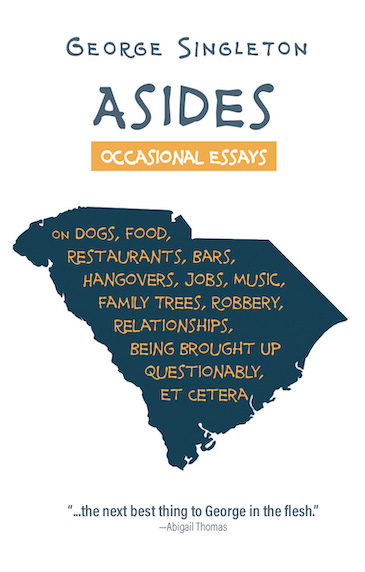Under Attack
Generals Burnside and Longstreet face off in Earl J. Hess’s study of the Civil War struggle for Knoxville
While Grant gathered his forces and defeated Bragg in Chattanooga, Confederate James Longstreet tried to retake Knoxville from Union forces under Ambrose Burnside. The Knoxville campaign, usually regarded as a sideshow to the more strategically vital Chattanooga battle, has been comparatively understudied, but in The Knoxville Campaign: Burnside and Longstreet in East Tennessee, Earl J. Hess has given it the scholarly but readable treatment it deserves. He tells the story in both overview and detail, tying the Knoxville story to events in Chattanooga, to the wider war, and to subsequent Tennessee history. For re-enacters, he provides detailed battle action, fortification details, terrain description, and maps. For those gripped by social history, he provides graphic descriptions of conditions, combatants, commanders, and civilians.
In 1860, the Knoxville population of 5,300 was heavily Union, yet the city had been under Confederate control since Tennessee joined the Confederacy. Knoxville was also a Union target because it lay on the strategically important rail line linking Virginia with Georgia. In September 1863, the federal command finally sent General Burnside to liberate the city in what turned out to be a bloodless takeover. Immediately, the Federals began to improve the city’s defenses and prepare for a Confederate attack. In late September, General Longstreet headed up from Chattanooga with a sizeable force of seasoned fighters for what was supposed to be a quick re-taking of the city. He needed to return to Chattanooga and support General Braxton Bragg against Grant’s expected attack.
Burnside’s smaller force, including many green recruits, came out to meet and successfully delay Longstreet’s forces west and southwest of Knoxville. By mid-November Longstreet’s forces found themselves facing substantial defensive fortifications in Knoxville. For two weeks, the city was under a kind of loose siege. Then Longstreet attempted to breech Fort Sanders, just west of downtown Knoxville. In a forty-minute battle, the defenders and the defensive preparations proved too good, and the Confederate assault was turned back. By then Grant had already defeated Bragg in Chattanooga, so Longstreet took his forces and headed into upper East Tennessee to consider his options, none of them practical or particularly useful to the Confederacy.
 Hess’s treatment of these events is detailed enough to satisfy military specialists: the names of commanders and legions, regiments, divisions, brigades, corps, and companies come thick and fast, and an appendix provides a complete list of participants. There are also more maps and pictures than in many books attempting to cover battles. In addition, Hess provides a whole chapter on the death and burial of General William Sanders, one of the heroes of the Knoxville campaign, as well as many insights into the thinking and designs of Orlando M. Poe, the engineer responsible as much as anybody for the Confederate failure at what Poe named, after his friend’s death, Fort Sanders.
Hess’s treatment of these events is detailed enough to satisfy military specialists: the names of commanders and legions, regiments, divisions, brigades, corps, and companies come thick and fast, and an appendix provides a complete list of participants. There are also more maps and pictures than in many books attempting to cover battles. In addition, Hess provides a whole chapter on the death and burial of General William Sanders, one of the heroes of the Knoxville campaign, as well as many insights into the thinking and designs of Orlando M. Poe, the engineer responsible as much as anybody for the Confederate failure at what Poe named, after his friend’s death, Fort Sanders.
General readers will likely be more engaged by the sections that detail the role played by Knoxville’s 752 black residents, slave and free, and by Hess’s description of the miserable conditions of both the troops and the city’s residents. It was a time of brutal shortages for all. One Confederate soldier admitted, “I was so hungry that I felt like I had reverted to the original type of savage man, and would have stolen bread from a baby, if there had been bread and a baby to be found.” Hess writes, “The mules often ate the wooden whiffle trees from the tongues of wagons, or the hair on each other’s tails.” Hess quotes Burnside’s report that animals not needed for the war effort “were killed and thrown into the river in order to save forage.” Downstream, the Confederates caught the carcasses to strip them of precious iron shoes and nails.
Hess, a scholar at Lincoln Memorial University in Harrogate, is a master at this kind of storytelling, often quoting graphic passages from his sources. During one Confederate retreat on December 17, he writes, “The weather was bitterly cold and bloody footprints could be seen on the frozen roadways.” As usual with books about Civil War battles, the general reader will be appalled that humans could or would endure such deprivation, suffering, and carnage.
Professor Earl J. Hess will discuss The Knoxville Campaign: Burnside and Longstreet in East Tennessee at the Frank H. McClung Museum on the University of Tennessee campus in Knoxville on November 11 at 2 p.m.


